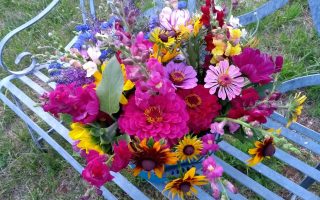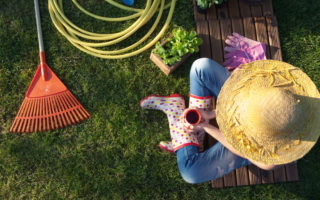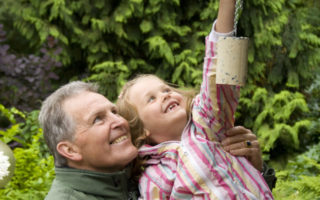Take a Closer Look at the Limousin Tree Population


with professional tree surgeon Darren Edwards
“we can learn a lot about the condition, health and life of a tree just by studying its body language.”
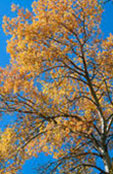 It can be difficult to understand that just because something cannot walk, run, talk, or communicate in some way, that it is a living organism. That unless we can take a pulse, feel a beating heart, or hear the sounds of a breath taking in the life giving oxygen, to be carried by blood vessels into the cells of essential organs, and then exhaling the waste carbon dioxide, that it’s just a dormant lifeless object. If something cannot move its limbs, or boughs, but for the elements that are forced upon it, then it must surely not be alive.
It can be difficult to understand that just because something cannot walk, run, talk, or communicate in some way, that it is a living organism. That unless we can take a pulse, feel a beating heart, or hear the sounds of a breath taking in the life giving oxygen, to be carried by blood vessels into the cells of essential organs, and then exhaling the waste carbon dioxide, that it’s just a dormant lifeless object. If something cannot move its limbs, or boughs, but for the elements that are forced upon it, then it must surely not be alive.
A famous quote by author Minnie Aumonier states that ‘There is always music amongst the trees in the garden, but our hearts must be very quiet to hear it’. Although it may have been meant in a more poetic way, this quote has more connotations than realised. Aspen, (Populus tremula) is also known as the whispering tree, as the leaves are forever dancing and whispering as they are caressed by the passing breeze of a sunny summer day. Stand under any large multi stemmed tree during a strong breeze and listen to the limbs rubbing against each other. They will sound out in protest against the interference of the wind as it impatiently rushes through the trees crown. Like us, the older the tree, the louder the creaks and groans from the joints appear to sound.
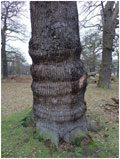 You may argue that these are just sounds created by nature using the tree as one of many instruments at its disposal and that is not proof of life, yet there is a real intelligence and understanding within the fibres and chemistry that make up this earths lung.
You may argue that these are just sounds created by nature using the tree as one of many instruments at its disposal and that is not proof of life, yet there is a real intelligence and understanding within the fibres and chemistry that make up this earths lung.
As with most living organisms, energy created by the tree is used to its maximum efficiency. Although specific species will always be recognisable by genetic similarities, environmental conditions play a very large part on the individual trees development. This is commonly known as ‘The Trees Body Language’.
Trunks, limbs and branches will only develop sufficiently to suit the stresses placed upon them as they develop. Like the muscles of our bodies, the greater the stress, the larger they will grow and the stronger they’ll become. Saplings, growing under the shadow of established woodland, need to break through the upper canopy as quickly as possible. They’ll put all their energy into growing straight up, sacrificing girth and strength for the chance to break out above the competition around them and gain the advantage of light.
 This energy efficiency is further evident in mature trees. As they grow the lower branches become shaded out and less efficient. This is recognised by the tree, and these branches are shut down and allowed to naturally die off. Annual leaf fall of deciduous trees is a result of the tree realising that the amount of daylight hours is insufficient for it to produce life giving glucose, so it goes into its annual hibernation.
This energy efficiency is further evident in mature trees. As they grow the lower branches become shaded out and less efficient. This is recognised by the tree, and these branches are shut down and allowed to naturally die off. Annual leaf fall of deciduous trees is a result of the tree realising that the amount of daylight hours is insufficient for it to produce life giving glucose, so it goes into its annual hibernation.
If decay takes hold, eating away and weakening the heartwood of the tree, extra layers of wood are created around these vulnerable areas to further strengthen it. Like scar tissue or the calcification of a healing bone, this will show up as swellings along branches, stems or roots.
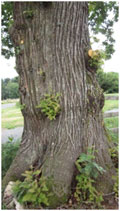 In its final years of life, the tree performs one final act of selflessness. When disease has a final and terminal grip on the life of the tree, the essential and limited reserved energy supplies, stored within the cells throughout, put all their efforts into producing and abundance of flower and fruits. This is an attempt to ensure the next generation of its species carries life forward to start the cycle again.
In its final years of life, the tree performs one final act of selflessness. When disease has a final and terminal grip on the life of the tree, the essential and limited reserved energy supplies, stored within the cells throughout, put all their efforts into producing and abundance of flower and fruits. This is an attempt to ensure the next generation of its species carries life forward to start the cycle again.
Although they may not be able to verbally communicate, we can learn a lot about the condition, health and life of a tree just by studying its body language.
Article kindly provided by
Darren Edwards Tree Surgery
.jpg) *Fully qualified and insured in all aspects of tree work.
*Fully qualified and insured in all aspects of tree work.
*Reducing, Shaping, Thinning, Tree Felling, Hedge Trimming.
*Tree Problems Diagnosed.
*Free estimate and advice given.
Covering areas 87, 19, 24, 16
Biaugeas
COUSSAC BONNEVAL
87500
Tel: + 33 (0) 5 55 09 81 12
Mob:+33 (0) 647384695
Email: jackndaz@hotmail.com
Contact: Darren Edwards
More from Darren
The Rebirth of Limousin’s Trees
Share to: Facebook Twitter LinkedIn Email
More in cycling, garden, health, insurance, language, summer, work
By FrenchEntrée
Leave a reply
Your email address will not be published. Required fields are marked *

